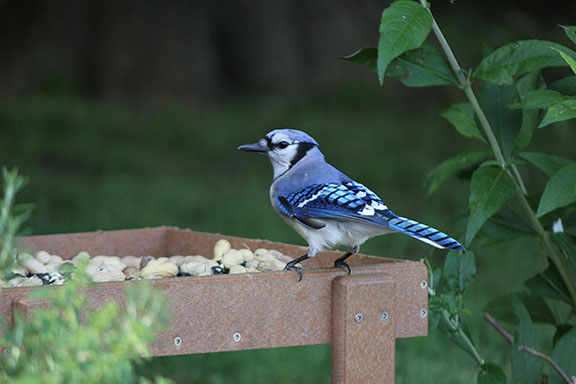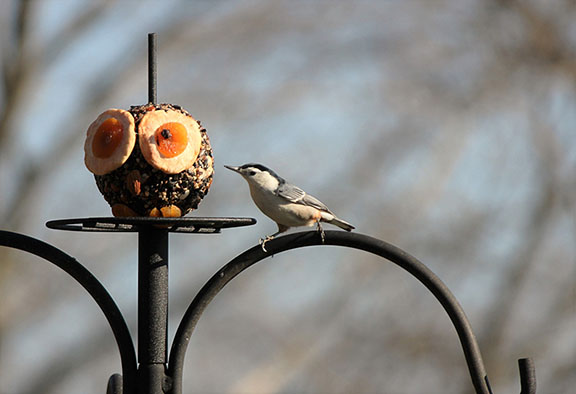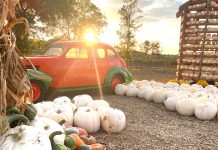
Photo by Elizabeth Wulfhorst
By David Saidnawey
Are you a “seasonally savvy” backyard bird feeder? Changing seasons not only affect people, they also affect the birds at your backyard feeders. Here are some things to expect as we transition from warm summer to cooler fall and winter weather.
Lots of backyard birds get quiet at your feeders in early autumn. Why? Because there’s lots of natural bird food around for them. Insects, seeds from the flowers dying in your garden and more are all plentiful this time of year. Birds know this abundant food supply will disappear as cold weather approaches, so they hoard the natural supplies while they can. You may actually see birds “cache” or store seeds under tree bark and in tree knotholes or bury seeds under leaves. Birds are great long-term planners. They know better than most that it’s going to get cold and caching is just another way to make sure there will be adequate food supplies for the upcoming harsh winter.
Goldfinches are the exception to this “quiet feeder” situation. Goldfinches are very late nesters, and their fledglings often don’t leave the nest until August. In addition, goldfinches go through a complete molt at this time of year, losing their bright summer feathers and replacing them with more drab winter plumage, which burns up a lot of energy. That means goldfinches will be quite active at your feeders for the next several weeks. Providing food high in protein (nyjer seed, nuts) will help with feather replacement, since feathers are largely made up of protein.
Are you seeing bald birds this time of year? That’s because they’re molting. Most birds molt their feathers gradually, but some birds have learned to do it all at once. Cardinals and blue jays are the most likely birds to do this. Don’t worry if you see a bald cardinal. Most likely they’re healthy – and maybe a little embarrassed!

Photo by Elizabeth Wulfhorst
As early fall evolves into more consistently cold weather, activity at your bird feeders should increase. Foods high in fat are ideal to help birds stay warm in colder weather. Higher fat foods include suet, peanuts and sunflower seeds.
Providing a place for birds to shelter from the bad weather is also a good idea. As you’re doing your fall cleanup, think about creating a brush pile in the back corner of your yard. Raking all those leaves and dead branches into a pile is a great way to provide a place for birds to get out of the harsh weather and also to hide from predators.
Water is also essential for birds at all times of the year. Keeping your bird baths full will help birds with hydration and also with maintaining clean feathers. You might want to consider putting out a heated bird bath when the temperatures drop consistently below freezing level.
Yes, autumn is a busy time – for humans and for birds. But try to find the time to get outside and enjoy nature. The weather’s gorgeous and the birds are fun to watch!
David Saidnawey is the owner of Wild Birds Unlimited, Middletown. He has been an avid lover of birds and nature for more than 15 years.














